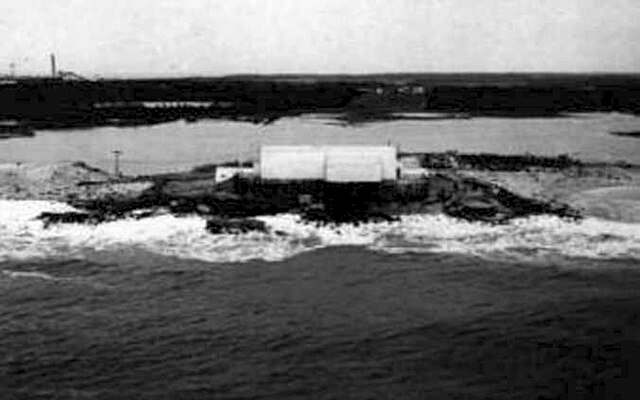United States Naval Facility, Barbados
Naval Facility (NAVFAC) Barbados, TWI, in commission 1957 to 1979, was the most southern of the Atlantic Sound Surveillance System (SOSUS) shore terminals. It had the distinction making the first system detection of a Soviet nuclear submarine in 1962 as that submarine was transiting off Norway. The facility was located adjacent to the Harrison Point Lighthouse, Parish of Saint Lucy.
Naval Facility Barbados also showing the Harrison Point Lighthouse.
Sound Surveillance System (SOSUS) was the original name for a submarine detection system based on passive sonar developed by the United States Navy to track Soviet submarines. The system's true nature was classified with the name and acronym SOSUS classified as well. The unclassified name Project Caesar was used to cover the installation of the system and a cover story developed regarding the shore stations, identified only as a Naval Facility (NAVFAC), being for oceanographic research. The name changed to Integrated Undersea Surveillance System (IUSS) in 1985, as the fixed bottom arrays were supplemented by the mobile Surveillance Towed Array Sensor System (SURTASS) and other new systems. The commands and personnel were covered by the "oceanographic" term until 1991 when the mission was declassified. As a result, the commands, Oceanographic System Atlantic and Oceanographic System Pacific became Undersea Surveillance Atlantic and Undersea Surveillance Pacific, and personnel were able to wear insignia reflecting the mission.

NAVFAC Nantucket showing Terminal building as internal security area.
USNS Neptune (ARC-2), first cable repair ship formally assigned to Project Caesar.
Lockheed P-3B of Patrol Squadron 6 (VP-6).
NAVFAC Cape May (1955-1962) Terminal Building on WWII Coast Artillery bunker before storm damage forced move to Fort Miles in Delaware where it became NAVFAC Lewes.





